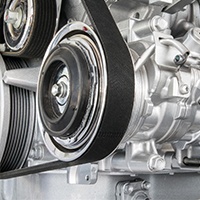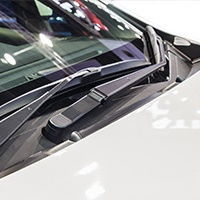Engine Belt and Hose Service
When everything is running properly, you never think about your vehicle’s belts and hoses. When they break though, it becomes a big problem very quickly.
Engine Hoses
Engine hoses are designed to carry liquids. If a radiator hose develops a crack or hole, the coolant may leak. The result is your engine temperature could climb quickly. An overheated engine may leave you stranded. A quick inspection can determine if your hoses need to be replaced before they fail. Check out this video on how your cooling system works.
Serpentine Belts
Your vehicle’s belts are critical to operating its accessories. They are used to turn the water pump, power steering, alternator, and air-conditioning. They’re made of specific rubber that is designed to operate in extreme heat. While they are designed for long life, they do wear out or crack. If the belt breaks, your vehicle could be left inoperable on the side of the road. Check out this video on serpentine belts.
Timing Belts
Your timing belt plays a vital role in your engine’s performance and operation. As its name implies, the timing belt is responsible for the timing of the engine. If it’s damaged or stretched, your engine may not run properly. Many manufacturers recommend replacing the timing belt every 100,000 miles. It is a good idea to inspect your timing belt every 15,000 miles.
What will your local auto repair shop look for while inspecting your timing belt?
- Timing belts will wear down from normal everyday usage. They will wear out faster if the engine is put under extra strain such as pulling a trailer.
- Worn edges with the filaments visible.
- Cracking anywhere along the length of the belt. Your technician will inspect both sides.
- Glazing or shiny surface on the timing belt. This is a warning sign that your belt has lost some of its flexibility and may be more prone to breakage.
- Material collecting on parts. As the timing belt wears away debris builds up in the rib cross-sections. This can cause belt noise and unwanted vibration.
- Elongation or stretching. This reduces the tension on the belt and reduces the required power to the accessories.
- Misalignment wear resulting from the tensioner’s internal components malfunctioning. This will likely lead to excessive vibration, noise, and potential overheating.
Check out this video on timing belts and timing chains.
It’s like they say, “timing is everything”, and that goes double for your vehicle’s performance. Make sure your timing belt is inspected by your local auto repair shop on a regular basis.




